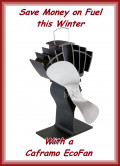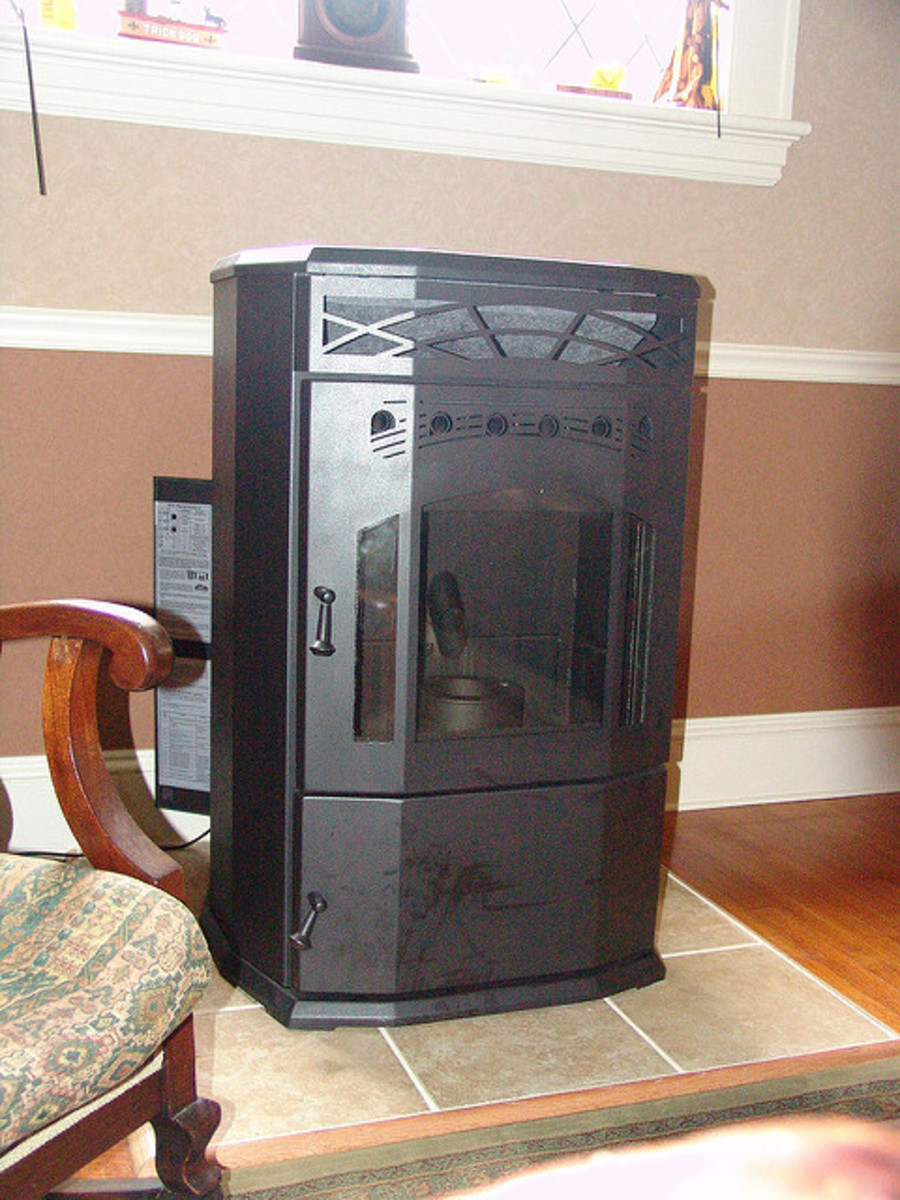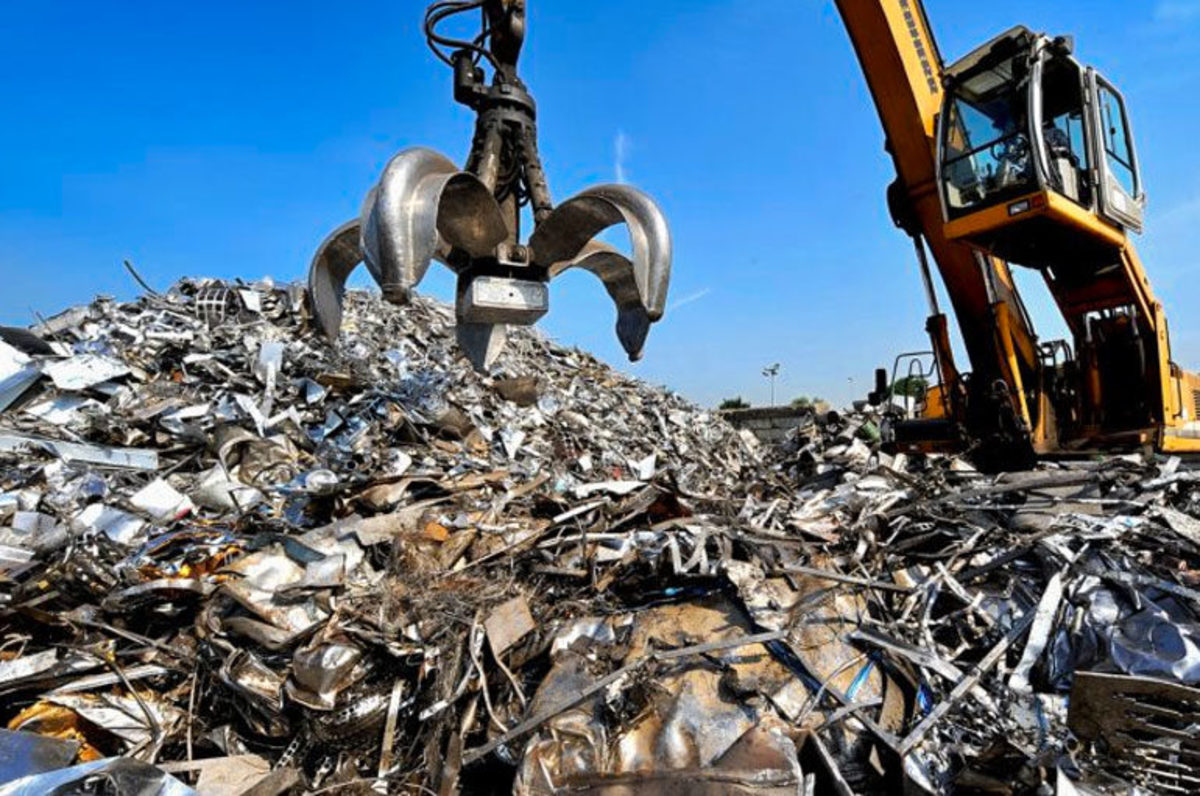High Efficiency Wood Stove & Fireplace Buyers Guide
High efficiency wood burning stoves help solve certain long-standing problems with wood stoves. Wood stoves are the old-fashioned, and still powerful, solution to heating up a room or cooking indoors with natural burning wood. The problem with most wood stoves is that when they're burning wood, they don't burn all of the gases that come from the wood as it combusts. The temperature of the fire is too low. This means that energy from the combustion is wasted, resulting in smoke pollution. A high efficiency wood stove solves the problem by adding an extra, hotter fire to the mix and burning those extra gases.

How a High Efficiency Wood Stove Works: Catalytic and Advanced Combustion
Advanced combustion high efficiency wood stoves are less expensive than high efficiency catalytic wood stoves, which operate with catalytic combustors. Both are energy-efficient wood stoves.
Advanced combustion models are also called secondary burn stoves, and work as follows: When a piece of wood burns and emits smoke, that smoke contains flammable gases, such as nitrogen oxides and organic gases - flammable at higher temperatures, that is.
High efficiency wood burning stoves typically have a second chamber inside the stove, an insulated firebox, located over the fire. That chamber gets very hot - up to 1100 degress Fahrenheit - because the burning wood is directly below it.
As the gases pass through the chamber, they catch on fire. You now have two fires going in the stove, one burning on the wood, the other busily burning gases in the second chamber above it. The resulting output is a very low polluting exhaust and a very high heat, with an advertised efficiency of 60 to 72 percent, according to the U.S. Department of Energy.
Catalytic wood stoves have an efficiency of 70 to 80 percent and
use catalytic combustors to burn combustible gases at lower
temperatures than they would normally need to burn. They can cost significantly more than a secondary burn stove. Also, a catalytic wood stove will decrease in efficiency over time as the catalytic combustor wears out, a sign of this being a darker smoke being emitted. The same problem does not exist with the advanced combustion type of high efficiency wood stove.
Why High Efficiency Wood Burning Stoves are Hard to Make
High efficiency wood burning stoves that use advanced combustion involve some tricky thermodynamics. Managing the output of hot gases, including concentrating them in one place so they will catch on fire, requires an exact design. The addition of oxygen is necessary, but not too much of it - only in sufficient quantities for the gases to burn - otherwise the draw sucks in too much air, resulting in the cooling down of the gases.
History of Wood as a Heating Agent
According to the U.S. Department of Energy, it was the rule rather than the exception to use wood heat in the home prior to the 20th century - a whopping 90 percent burned wood for heating. By the 1970s, only 1 percent of Americans continued to use wood burning stoves and fireplaces to heat their homes. Since then, in the interests of energy conservation, wood burning stoves and fireplaces have, to a certain degree, become "green" as alternatives to other energy sources are sought.
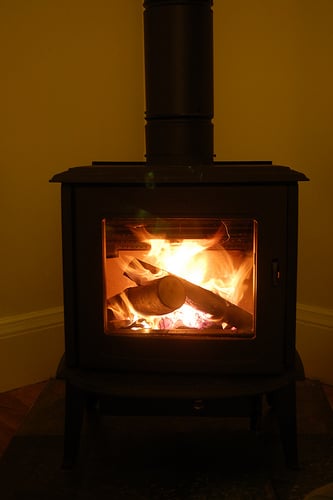
Pros and Cons of HE Wood Stoves
Advantages
- High efficiency wood stoves are, as mentioned, low in pollution and very energy efficient. Not only do they use up the gases, but they reduce buildup of flammable creosote. The funneling of hot air in an advanced combustion high efficiency wood burning stove means the glass covering the fire is kept cleaner for a better fire-viewing experience. They are also powerful; the larger ones can heat an average size home.
- High efficiency wood stoves also have advantages over wood pellet stoves, another type of wood stove that burns pellets made from sawdust, wood chips, and other organic matter. Although wood pellet stoves are even more energy efficient, they do need electricity to run and also have several expensive component parts that can fail. Wood stoves need no electricity and generally do not have parts that wear out (the major exception being the catalytic combustor of a catalytic wood stove).
Disadvantages
- However, high efficiency wood stoves are not run by thermostat. You can't "turn them down" when they're a smidge too hot. They either run properly, blasting heat, or they're not running. They don't burn things moderately.
- Safety precautions must be followed, as well. You'll probably need to rely on a professional to outfit and install the wood stove, and in the case of a wood burning fireplace insert, you may need a professional chimney sweep to come in to maintain the chimney periodically, rather than clean it out yourself.
Buying Tips for High Efficiency Wood Burning Stoves
- Look for the EPA sticker. Make sure the high efficiency wood stove or high efficiency wood burning fireplace comes with a sticker from the Environmental Protection Agency certifying that they have lower emissions.
- Check the building codes. Due to the pollutants emitted by wood burning stoves and wood burning fireplaces, local municipalities may restrict when they can be used in new and old construction. Check first with your local agency regulating building codes and energy use to see the regulations, if any, with which you must comply.
- Buy the right size stove or fireplace. Choose a wood burning stove that's neither too small nor too large for the space you want heated. Resorting to burning a too-large wood stove at a low smolder to reduce heat results in wasted fuel and increased pollution. General advice offered by the Department of Energy is to heat a 2,000 square foot space with a 60,000 Btu wood burning stove, or a 1,300 square foot space with a 42,000 Btu stove.
- If you have an old wood burning stove or wood fireplace and would rather retrofit it with a catalytic combustor than replace it with a high efficiency model, you may be able to buy a catalytic damper kit for installation in the flue collar. (The stove body or pipe must also house a heat sensor if you do a retrofit.) Check the operating manual to see whether your wood stove can be retrofitted, or with your local environmental agency.
- For safety's sake, get a professional to evaluate the optimal location for your wood burning stove and to install it.
Wood Burning Stove Books
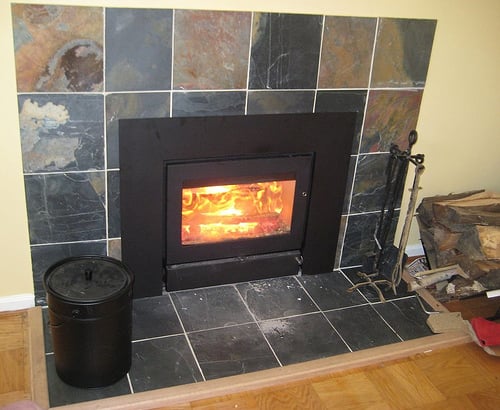
High-Efficiency Fireplace Inserts
Most existing fireplaces do more to lose heat than increase it. To make your old fireplace more energy efficient, you can install a high efficiency wood burning fireplace insert into your existing masonry fireplace. You'll need a flue collar to channel the smoke up the chimney.
Make sure a professional approves the fireplace for a wood burning insert and installs it to be airtight, and when any gaps are filled between the high efficiency fireplace insert shield and the mouth of the fireplace, only materials certified safe for fireplace insulation are used. According to the Department of Energy, a high efficiency wood burning fireplace insert that has been fitted correctly can save almost as much energy as a high efficiency wood burning stove.
Note: Unless you have a door to provide access for chimney cleaning installed
above the insert, you will also need to have a chimney sweep come in to
maintain the chimney once the fireplace insert is installed.
Maintenance of High Efficiency Wood Burning Stoves and Fireplaces
For safety's sake, take the following maintenance precautions:
Cleaning a Wood Burning Stove
Clean the soot out the inside of the wood burning stove with a wire brush regularly to keep the wood stove running efficiently.
Wood Stove Inspection
Before the cold season each year, get your wood-burning stove or fireplace insert inspected by a chimney sweep certified by the CSIA (Chimney Safety Institute of America).
For catalytic wood burning stoves, keep an eye on the combustor. Three times each cold season, have catalytic combustors inspected and replaced, if necessary. The cost for the replacement of a catalytic cell may be from $75 to $160.
Wood for Wood Stoves
What type of wood should you use in your wood stove? Ideally, choose sustainably harvested wood. Denser woods such as oak, pine or hickory have enough fuel to burn all night. To help keep a chimney clean, consider aspen, which burns very hotly.
The wood you use in your wood stove should have about a 25 percent moisture content - not much wetter and not much dryer. Make sure you only use seasoned wood - wood that has been set to dry throughout the summer after being cut down in the spring. Store the wood ideally outside the house, at least a foot off the ground, covered on top to protect from the elements, but not air tight.


